PV-System, layout
The configuration and realisation of a PV-system always is a compromis determined by the 'environment'.
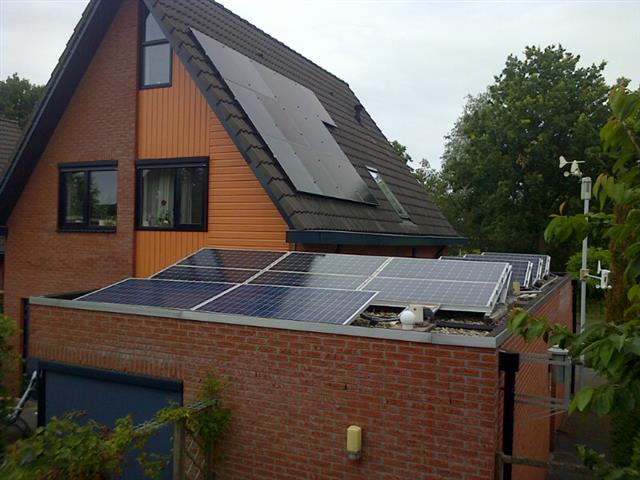
Because the ridge of the tilted roof of our house is oriented North/South, it is only possible to fit panels on that roof facing Eastward or Westward:
'suitable for solar-power', as can be seen on the sun-map of Hengelo, with preference for looking east, but in relation with a tilt of 55 degrees in advance the possible PV-efficiency reduces to <80%.
Looking South at lower elevation generally is better.
At the side of the garden the illumination is almost unlimited, but till 10:00 and after 16:00 with shading on the flat roof alongside the main roof: as a consequence, of potential 16 hours of illumination only half remains.
To harvest enough power to feed the household, the PV-system combines a compact array on the tilted, main roof with a distributed array on the adjacent flat roof.
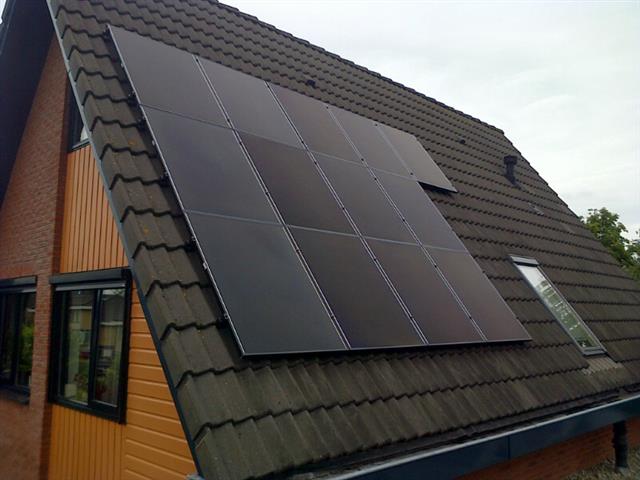
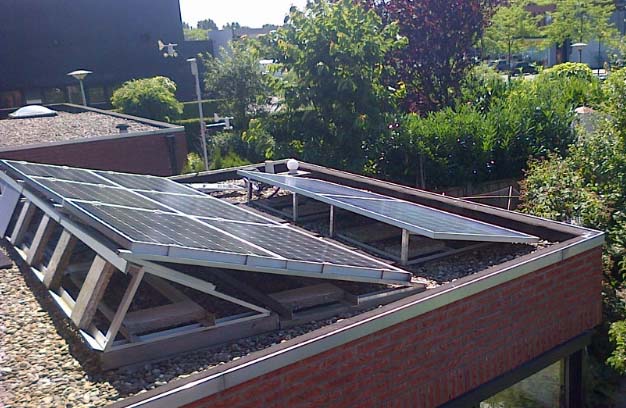
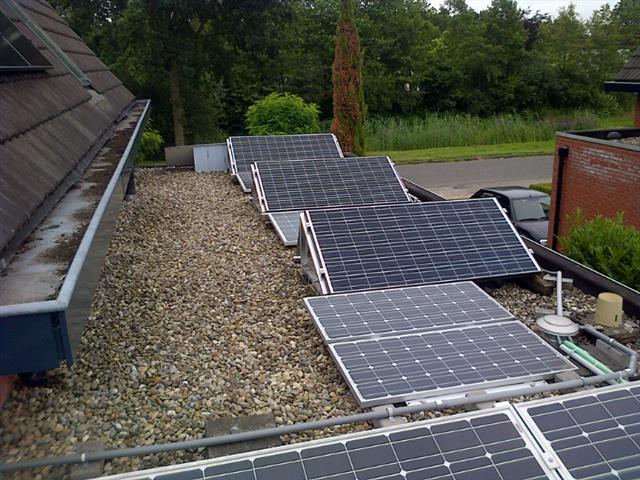
The configuration results from trade-off of the following aspects & considerations:
- Investment vs. payback, or time-till-breakeven
- Desired energy harvest vs nominally possible harvest, in which this diagram may be a guideline, elaborated in the local sun-map.
The estimated performance of your panels at your specific location can be calculated by PVGIS under section Monthly Radiation of Daily Radiation.
For the Americas PVWatts is the more appropriate tool. - Expected actual efficiency (in relation to viewing direction, as mentioned above), as described here.
- Installation aspects (such as available & suitable roof-surface, roof construction characteristics and allowed roof load, installation method, requirements for maintenance & access)
- 'Lessons-learned' and opinions of other people or organisations, at ;-) this website, and by yourself as result of experiments
- Visual aspects such as layout, visibility and colour, because also 'taste matters'
- What can be DIY and/or what can/must be delegated/hired will have impact on cost of installation & maintenance
- Idealistic arguments, such as investment in minimal consumption-footprint, endurance, lifecycle, recycling, etc.).
Collecting experience, since 2004 stepwise the configuration expanded from 3*panel_PMS125/125Wp with 1*inverter_PSI300
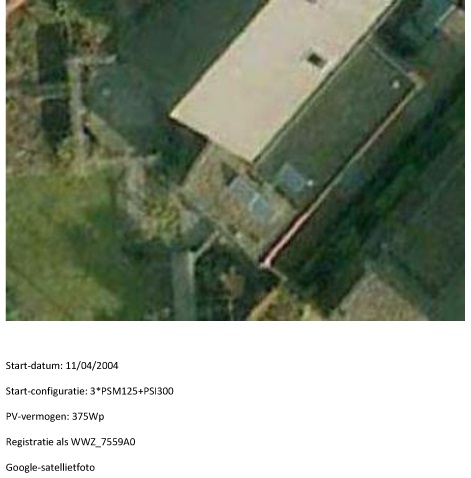 (van BeldeZon/RABO, meanwhile replaced) and later 6*CSUN/190Wp with 2*inverter_STECAGrid500 (via WijWillenZon/Urgenda), and another 3 steps under own management, till the present configuration, under grateful application enroute of available government's grants and subsidies.
(van BeldeZon/RABO, meanwhile replaced) and later 6*CSUN/190Wp with 2*inverter_STECAGrid500 (via WijWillenZon/Urgenda), and another 3 steps under own management, till the present configuration, under grateful application enroute of available government's grants and subsidies.In the present setup with 30 panels and 9 inverters the effects from shading can reasonably be spread & limited, because unshaded panel-groups can optimally operate, regardless any problems for shaded panel groups. For a problematic configuration 1 inverter/panel would be optimal, but usually that solution is less cost-effective.
The present configuration demonstrates by it's segmentation the possibilites and problems, related to installation of PV-panels around a house.
Questions/Remarks? Contact us.
Reversely, we appreciate to receive your hints for improvement of our setup!
The configuration now comprises:
- 12 panels at elevations of approx. 10 and 15 degrees, looking South (+205 degrees from North) with 5 inverters.
An elevation of 10 degrees is OK for 'sunharvest' in midsummer, while 15 degrees is 'average' over the year.
Higher elevation would be efficient if the sun's elevation is low in autumn, winter and spring (but then southern neighbours'roofs are blocking). - 3 panels at elevations of 30 degrees, looking South (+205 degrees from North) with 1 inverter.
Compatible with the elevation of easstern neighbour's roof. - 15 panels with elevation 55 degrees, looking East (+115 degrees from North) with 2 inverters.
These CIS-panels potentially can produce more than their nominal power due to socalled light-soaking effect. - The 9 inverters are split in 4 groups according to manufacturer&type inverter [STECA, Involar, SAJ and Solis].
The STECA-inverters and the Involar-inverters by division of the panels in small groups per inverter provide the desired flexible handling of changing/variable illumination at less favourable locations.
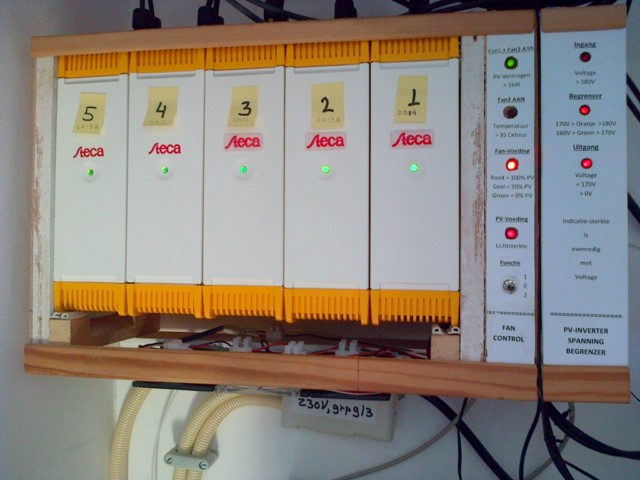 The 5 STECAGrid500-inverters each serve a group of 2, 3 of 4 panels, and connected in combination they are 1 bigger inverter with 1 grid-interface.
The 5 STECAGrid500-inverters each serve a group of 2, 3 of 4 panels, and connected in combination they are 1 bigger inverter with 1 grid-interface.
With DIY this block of inverters has been expanded:
- cooling has been improved by a casing around the block of inverters with fans for forced ventilation.
The fans under the casing are controlled by the FanControlUnit (= 1st extension next to [righthand] inverter1)
- in the original configuration between inverter1 and it's 4 CIS-panels a voltage-limiter protected the inverter-input (= 2nd extension next to inverter1)
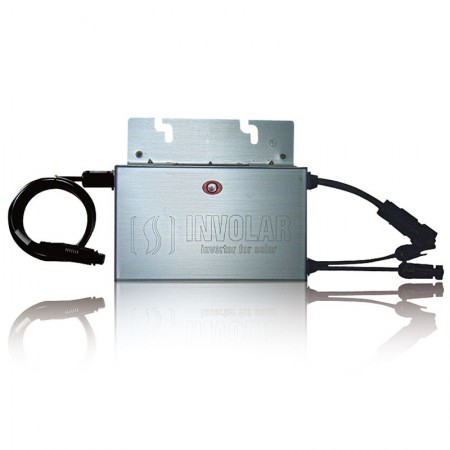 The 2 Involar_MAC250s are socalled micro-inverters in a chain with 230V feedthrough.
The 2 Involar_MAC250s are socalled micro-inverters in a chain with 230V feedthrough.
With 1 panel/inverter these 2 inverters serve 2 'loose' panels.
Although these micro-inverters can be fixed to the panels, on purpose environmentally 'more friendly' they are installed inhouse.
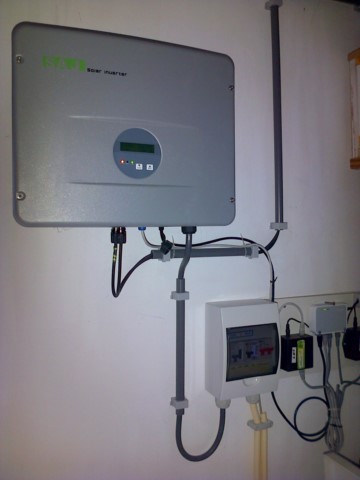 The SAJ_TL1.5K-inverter serves 9 CIS-panels in 3 parallel strings in 1 array:
The SAJ_TL1.5K-inverter serves 9 CIS-panels in 3 parallel strings in 1 array:
these 9 panels all have the same line-of-sight and same illumination, and hence do not need separation over inverters.
 The Solis700-inverter now serves the 4 CIS-panels (in 2 parallel strings) originally linked to STECA-inverter#1.
The Solis700-inverter now serves the 4 CIS-panels (in 2 parallel strings) originally linked to STECA-inverter#1.
Why these 4 CIS-panels not connected to the SAJ-inverter?
The capacity of the present SAJ-inverter is only sufficient for the 9 CIS-panels: would be 'overpowered' by 13 CIS-panels => upgrade needed.
Trade-off work & investment => much simpler to add an extra inverter under application of the existing cabling.
The voltage-limiter at the side of STECA-inverter#1 now serves as interface&indication-unit between the 4 CIS-panels and the Solis-inverter.
Details for the actual configuration can be found in this table.
After addition of Groep G the nominal installed power will be 5240Wp:
the potential extra output of the CIS-panelen may raise the output to >5400Wp.
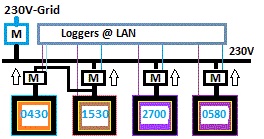
4 Loggers and a number of kWh-meters read the configuration for different aspects and enable view from different perspective both separate & joint:
at one side just curiosity, but for Domotics also a requirement, because you have to know the available PV-production.
- Each Inverter-group has an own PV-Logger reading the data (= purple lines in the diagram).
These PV-Loggers each provide a separate upload to PVOutput.org.
This organisation stores the data in it's database, and produces related graphics and tables.
PV-Output 'simply' deducts from the received data some secondary info, such as for weather conditions and average power. - The 2 FP4All-PVLoggers for the STECA-Inverters and for the SAJ-inverter use internal info from the inverters to produce local webpages and an upload of cumulative and individual results.
- The group of STECA-Inverters by means of their FP4All-PVLogger also has a control capability towards each inverter for powersetting.
Based on configuration-information the software of this FP4All-PVLogger determines whether/how the present inverters of type STECAGrid300 ór STECAGrid500 can have a higher power setting than the default value: no support for hybrid configuration (considering safety for all inverters).
In this configuration the PV-Logger control function increases the total, nominal capacity of the STECA-inverters from 2500VA to 2900VA, although obviously the actual max. power is dependent on the actual production of the panels.
The really achieved performance is described here. - The output from the block with STECA-inverters in addition has kWh-meter with RS485-interface read-out by the Domatica-System.
The FP4All-PVLogger estimates the PV-conversion, while the kWh-meter measures the output. - The Solis-inverter has datalogging by means of dataloggerstick with display on the Ginlong Monitoring website.
The Solis700-inverter is indirectly read by the Domotica-system with a kWh-meter withRS485-interface and via the meter's S0-interface. - At the combined output from the Involar-inverters a same set of kWh-meter with RS485-interface provides info to the Domotica-System.
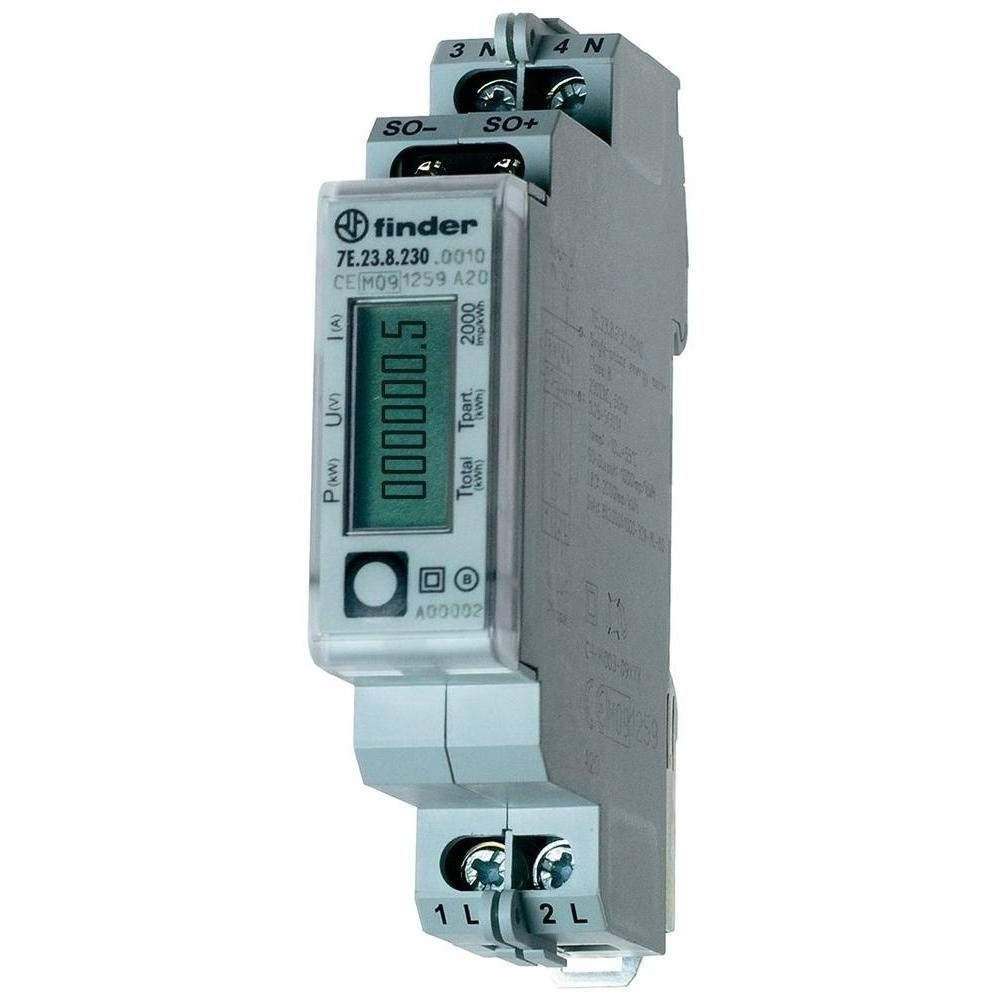

this logging reads (by means of the blue lines in the diagram) the 2 kWh-meters at the 230V-line to the switchboard, and produces for this website from the collected data an actual daygraph and an earlier daygraph.
The K8055-board also reads the temperature of the air flow through the STECA-inverters and accordingly controls the fans under the STECA-inverters (by means of the FanControlUnit mentioned before).
A small extra PV-panel connected to the K8055-board autonomously generates fan power supply for the STECA-inverters, independent & in direct relation with PV-power, because the output of this small PV-panel is proportional to the illumination.
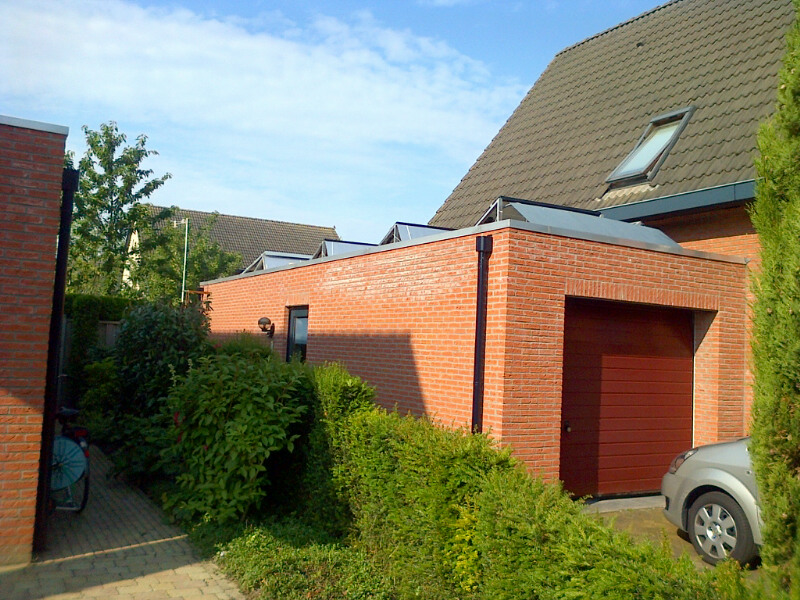
In the morning these reflectors mirror light to the panels in front of them.
Noticable effect in summer, not gigantic, but also small contributions count ....
Changed, probably reducing the gain as part of the remodelling in 2021.
Additional (Dutch) PV-information
Sitemap/ Jumplist for this website, incl. links to dutch versions of pages
Copyright © 2013-2022 T4S
Samenvatting voor Rechten & Verantwoordelijkheden / Summary for Rights & Liabilities